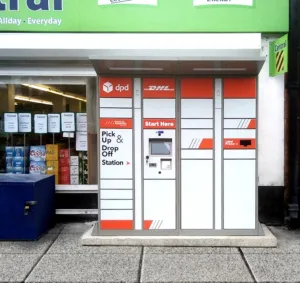By Andrew Norman, MD, ShipStation International
Omnichannel retailing has always proved challenging for retailers – for both those that have successfully migrated from a pure brick-and-mortar format, to retailers that natively blended online and physical stores from their inception.
This challenge became infinitely more difficult once the Covid-19 pandemic struck.
Seemingly overnight, the pandemic rewrote the rules of omni-channel retailing in a way that most of us could never have anticipated. For some retailers, these developments placed their omni-channel ambitions entirely on hold.
As the world gradually returns to normality, it raises an important question – what does omnichannel mean today, and, in the years to come?
Before we can answer that question, let’s address two other questions.
First, ‘What does good omnichannel marketing practice look like today?’ and second, ‘how can retailers deliver the kind of customer experience their markets demand simultaneously over new and traditional sales routes?’
How to make omnichannel marketing work post-pandemic
Whether your focus is primarily B2B or B2C, a big part of any successful strategy is connecting with your customers when, where and how they want to communicate.
That will mean using communication channels you might not be familiar with or those you’ve never considered using for business before.
For example, some retailers are reporting nearly five-times the amount of customer message traffic over channels like WhatsApp compared to the same time in 2020.
Understanding how and where your customers want to buy from is still the foundation of any successful omnichannel strategy.
Next comes the perception that these new methods of interaction are genuinely better.
New isn’t better. Better is better.
Customers don’t just want new ways to shop and communicate; they want demonstrably better ways.
A shift from in-store, catalogue, telephone or completely automated online customer contact to messaging app channels can deliver better customer service without raising your costs.
You won’t have to hire more people to provide better interactions because your salespeople aren’t interacting in real-time. This allows a skilled operator to field several ongoing conversations at once and deliver better, more responsive interactions.
With that in mind, is there room in your omnichannel marketing strategy for automation?
There might just be. Modern chatbots are much more than the ‘voice messaging over text’ nightmares that made them infamous years ago.
A good chatbot or other automation implementation can be a huge people-power multiplier, freeing up your online teams to focus on what they do best – helping customers with tricky issues.
Optimising the buying experience for both on-site and online shoppers
Once you’ve covered the basics, it’s time to define why you want to expand omni-channel.
Many omnichannel marketing strategies pre-pandemic fell prey to the siren’s call of low cost, more automated customer interactions.
They saw digital, online, increasingly hands-off channels as an ideal replacement for the old way of doing things. “If we get rid of 100 salespeople or live operators, we can bring in enough automated capacity to serve twice as many customers at half the price! Everyone wins!”
But… that doesn’t always work.
Sure, you’ll get a few new customers who don’t care about personal interaction and are thrilled to conclude their business with you with a few texts. But for an established business – whether B2B or B2C, physical or online – that isn’t the experience that won you your customers in the first place.
Omnichannel means all channels, not just the new, cheap ones. A successful omni-channel marketing strategy will include all of the traditional options – the full-service options – and the automated channels.
Omnichannel also means operating smarter and delivering efficiencies. Yes, you might have countless channels to sell through, but what about fulfilment, order management and other logistical considerations?
Can those be unified across your business? Is there technology to empower you to sell omni-channel more successfully?
Ultimately, a strong omnichannel strategy lets you reach out to more people.
Most importantly, it will then let them choose the type of interaction they want with your company. It allows them to decide what the chosen customer journey will look like, and it gives them what they wish cheerfully – even if it is the most expensive option.
Choice is the ultimate definition of omnichannel post-pandemic. The ability for customers to shop where they want, how they want. In-store, online, mobile, marketplace, click and collect – shoppers have adapted their habits, some have completely redefined how they purchase items.
Whatever their behaviour, omni-channel is less about the practicalities of retailing nowadays and more about providing freedom.







